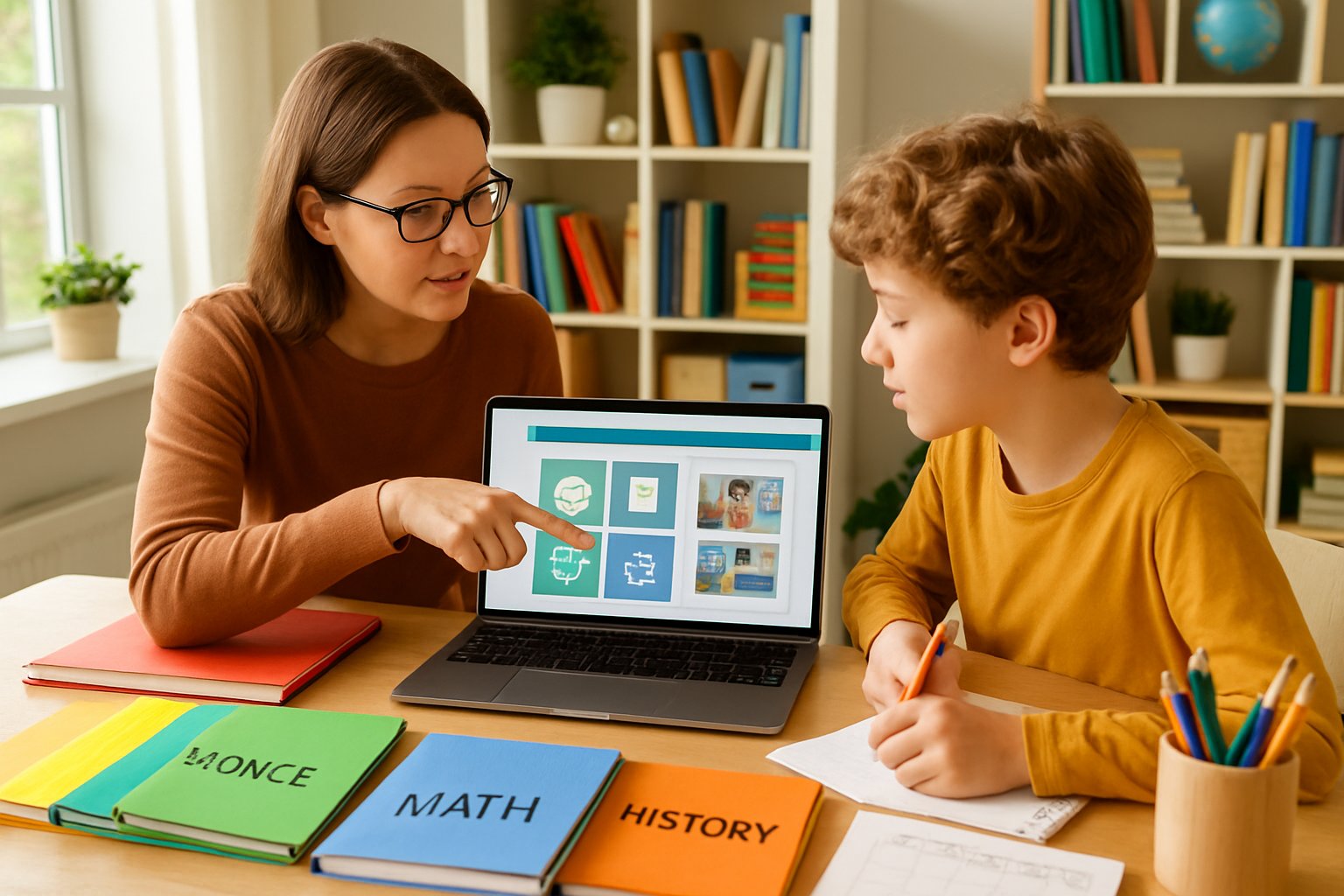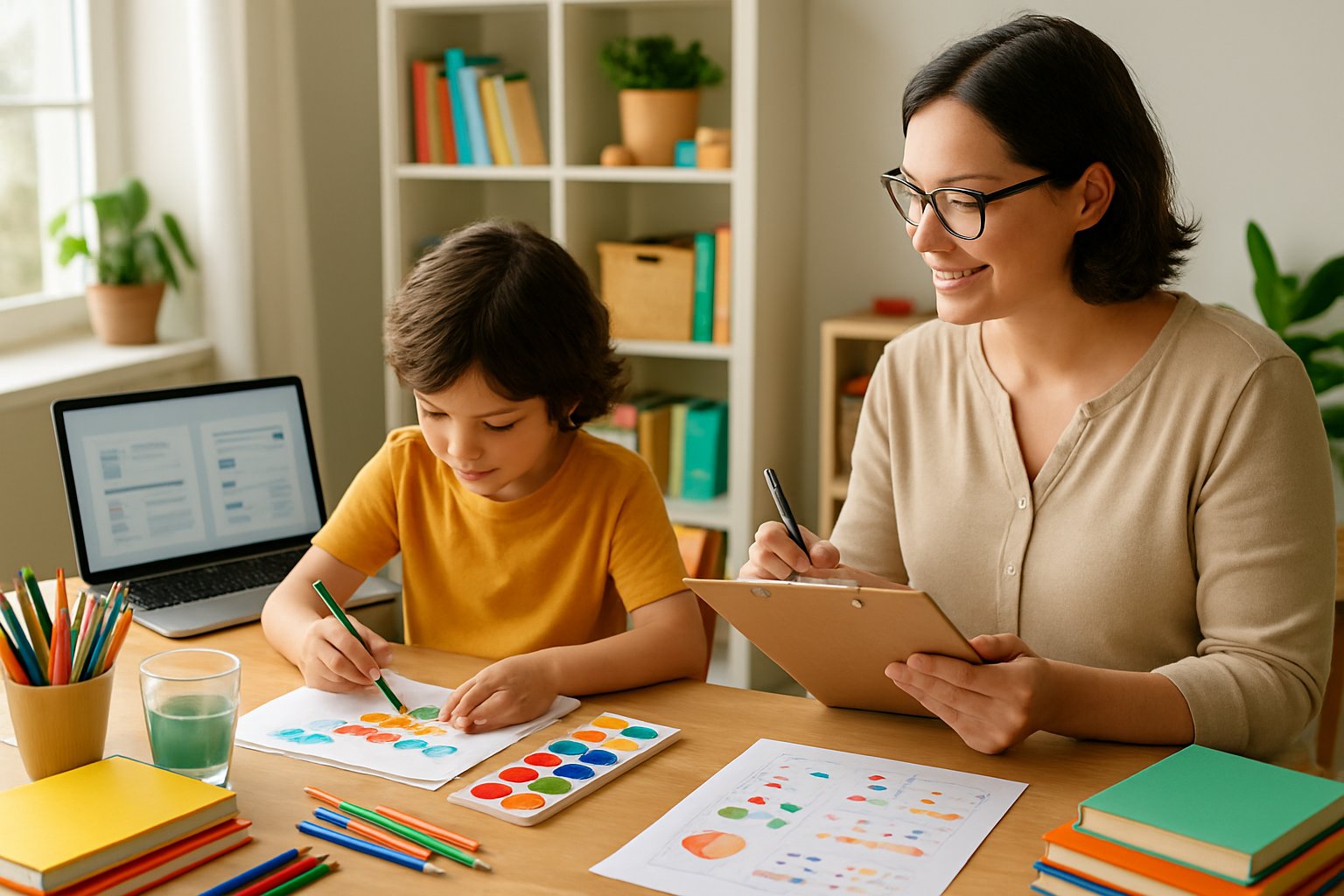Laying the Foundation: Why Start Financial Literacy Early?
Children begin forming money habits earlier than many adults realize. By the time they reach elementary school, they already observe how their parents earn, spend, and save. Early financial education helps them connect effort with reward, understand trade-offs, and develop financial literacy skills that last into adulthood.
The Role of Parents in Money Education
Parents play the most important role in shaping how kids view money. Children watch how adults handle everyday choices like paying bills, shopping, or saving for a family goal. These actions send clear messages about priorities and values.
Simple conversations during daily routines can build understanding. For example, explaining why a family chooses a store brand over a name brand helps kids see how budgeting works. Showing how bills cover needs like water, electricity, and internet connects money to real-life essentials.
Parents can also use tools like allowances or labeled jars for saving, spending, and sharing. According to Nurture’s guide on financial literacy for kids ages 4–7, these small systems help children practice managing money without pressure. Modeling positive financial behaviors is just as important as teaching them directly.
Benefits of Early Financial Literacy Skills
Learning about money early builds confidence and decision-making skills. Kids who practice saving and spending thoughtfully are more likely to delay gratification and avoid impulsive choices. They also learn the difference between needs and wants, which becomes a foundation for responsible financial habits later.
Early financial literacy also encourages generosity. When children set aside money for sharing, they connect finances with empathy and community. This practice can shape lifelong values around giving.
Research shows that financial habits start forming before age seven. Teaching kids about earning, saving, and sharing during this stage makes it easier for them to handle more complex lessons later, like budgeting or interest. Everyday practice, whether counting coins or saving for a toy, helps them build practical financial literacy skills.
Common Challenges and How to Overcome Them
One challenge is that many parents feel unprepared to teach financial literacy. Studies show that half of U.S. adults lack strong financial education themselves. This can make it intimidating to guide children.
Another challenge is balancing lessons with age-appropriate expectations. Young kids may lose interest quickly or struggle with delayed gratification. Parents can overcome this by using play-based activities, short-term savings goals, and visual tools like piggy banks or jars.
Consistency is key. If a child spends all their allowance right away, letting them experience the consequences teaches a lasting lesson. Guidance without micromanagement helps kids learn from mistakes. Resources like teaching tips from Western & Southern suggest that parents focus on simple, repeatable routines that make financial education part of everyday life.
Age-Appropriate Money Lessons and Activities
Children learn best when money concepts match their age and daily experiences. Simple tools like a piggy bank, allowance, or small savings goals can help them build financial literacy skills step by step.
Financial Literacy for Young Children (Ages 3-7)
At this age, kids can start learning the basics of money through play and simple activities. Using a piggy bank helps them see how saving works over time. Parents can guide them to split money into jars labeled save, spend, and share.
Stories and games also help. The Money as You Grow activities introduce ideas like needs versus wants in a way children understand. Counting coins, role-playing store shopping, and earning small rewards for chores can reinforce these lessons.
Key skills to focus on:
- Recognizing coins and bills
- Understanding that money is exchanged for goods
- Learning patience by saving for a small toy
These early habits create a base for stronger financial literacy later.
Money Skills for Tweens (Ages 8-12)
Tweens are ready for more responsibility with money. Giving them an allowance tied to simple chores can show them the value of earning. They can also practice making choices about spending versus saving.
Parents can introduce budgeting in a small way. For example, if a child wants a game, they can plan how many weeks of saving are needed. The FDIC’s Money Smart for Young People program offers age-appropriate activities that explain needs, wants, and basic budgeting.
A simple table can help organize their money:
| Category | Example |
|---|---|
| Save | Future purchase |
| Spend | Small treats |
| Share | Donate to charity |
By practicing these steps, tweens begin to see money as a tool they can manage.
Building Financial Habits for Teens (Ages 13+)
Teens are ready to handle bigger financial literacy lessons. They can open a savings account, track spending with apps, and learn how interest works. These skills prepare them for future expenses like college or part-time jobs.
Parents can guide teens in setting budgets for clothing, entertainment, or school supplies. The Ramsey Solutions guide on teaching kids about money suggests introducing topics like avoiding debt and practicing generosity.
Encouraging teens to set savings goals, such as buying a laptop, helps them see the benefits of delayed gratification. They also learn how to balance spending with saving, which strengthens lifelong financial literacy skills.
Practical Tools and Everyday Strategies at Home

Families can build financial literacy skills by weaving money lessons into daily routines. Simple tools like savings jars, clear rules for allowances, and open talks about budgeting make financial education part of everyday life.
Using Piggy Banks and Savings Jars
Young children learn best when they see progress. A clear piggy bank or jar lets them watch their coins and bills grow over time. This visual approach helps them connect saving with real results.
Parents can set up three jars labeled Save, Spend, and Share. This method teaches kids that money has different purposes. They can save for a toy, spend on small treats, or donate to a cause they care about.
Using jars also introduces goal setting. For example, if a child wants a $10 game, they can track how close they are to reaching that target. This builds patience and planning skills.
For more structured activities, families can explore tools like the Family-At-Home Financial Fun Pack, which includes games and worksheets to make saving and spending lessons more engaging.
Setting Up Allowances and Chores
An allowance gives children hands-on practice with money. When tied to chores, it also connects effort with earnings. Parents can decide if the allowance is fixed or based on completed tasks.
Some families create a simple chart that lists chores and their value, such as:
| Chore | Amount Earned |
|---|---|
| Make the bed | $0.25 |
| Wash dishes | $2.00 |
| Mow the lawn | $7.00 |
This approach shows kids that work leads to income. It also opens the door to conversations about budgeting. Children can practice dividing their allowance into categories like saving, spending, and giving.
Practical guides, such as these fun ways to teach financial literacy to kids, suggest using allowances as a tool to explain budgeting and even borrowing concepts in simple terms.
Involving Kids in Family Budgeting
Including children in family budgeting helps them see how money decisions affect everyone. Parents can show them how to compare grocery prices, track monthly bills, or plan for a family trip.
A simple way to start is by reviewing a grocery list together. Kids can help choose between brands and see how small choices add up. This teaches them about trade-offs and priorities.
Older children may benefit from discussing larger expenses, like how much goes to rent, food, or savings. Free programs such as Money Smart for Young People provide age-appropriate lessons that support these conversations.
By involving kids in real decisions, families give them practice in setting limits, balancing needs and wants, and understanding that budgets are about making choices.
Engaging Resources and Games for Financial Learning
Children often learn best when money concepts are tied to stories, play, and interactive tools. Families can use books, digital games, and free community programs to make financial literacy part of everyday life. These resources help kids connect money lessons to real choices, from saving coins to planning for the future.
Money-Themed Books and Stories
Books give children a simple way to understand money through characters and relatable situations. Stories often explain ideas like saving, spending, and sharing in ways that stick.
For younger kids, picture books that show characters earning allowance or deciding between wants and needs can be very effective. Titles like Alexander, Who Used to Be Rich Last Sunday or The Berenstain Bears’ Trouble with Money are popular picks.
Older children may enjoy chapter books that weave in themes of entrepreneurship or budgeting. These stories encourage them to think about how money choices affect goals.
Parents can also use the Money as You Grow book club, which pairs children’s books with easy discussion guides. This resource helps families talk about money in a natural way while reading together.
Educational Apps and Online Games
Interactive games make financial literacy fun and less intimidating. Many apps reward progress, which keeps kids motivated to keep learning.
Younger children can start with simple games that teach coin values and basic math. Options like Learning Coins or Money Bingo help them recognize money and practice simple transactions.
For middle schoolers, games such as Financial Football or Hot Shot Business combine decision-making with real-world money lessons. Teens can try apps like Zogo, which offers short quizzes and rewards for learning about credit, investing, and budgeting.
These tools let kids practice making financial decisions in a safe space. They also introduce topics like debt, saving, and investments without real-world risks.
Free Financial Literacy Programs
Families can also take advantage of free programs created by trusted organizations. These programs often include lesson plans, activities, and games that parents can use at home.
The FDIC’s Money Smart for Young People provides age-appropriate activities for grades K-12. It covers basics like counting coins, setting goals, and understanding needs versus wants.
The Council for Economic Education offers a downloadable Family Financial Fun Pack with games, worksheets, and discussion starters. This pack makes it easy for families to practice skills together.
Local credit unions and community groups sometimes run free workshops for kids and teens. These events often include hands-on activities, like running a mock business or creating a budget, to reinforce money management skills.






